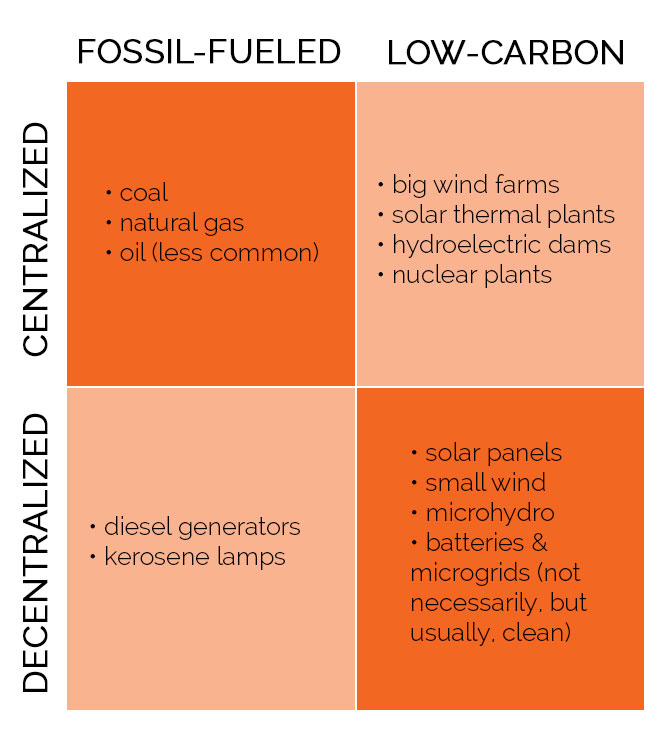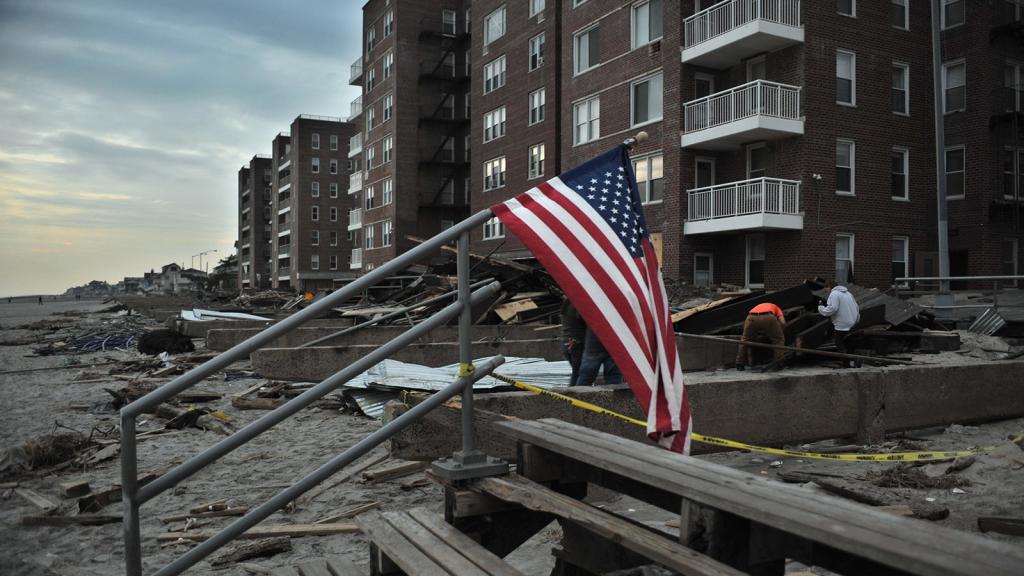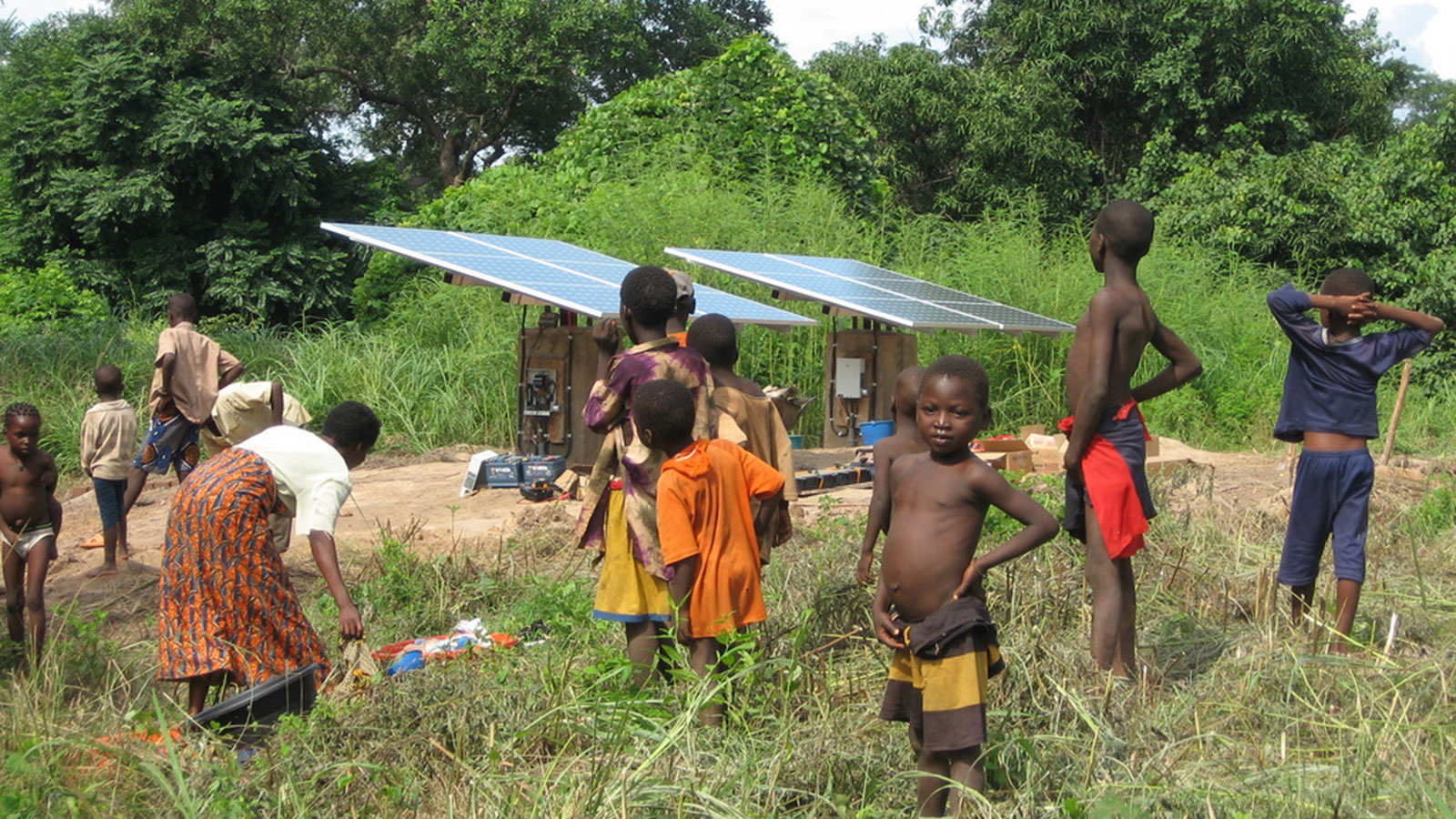In my previous post, I described the Scylla and Charybdis between which humanity must sail in the 21st century — energy poverty and climate change — and recounted a recent debate about how best to tack between them. This post digs a little deeper into that debate. How do we get electricity to the world’s poor without pushing into climate catastrophe?
Like all large systems, energy infrastructure is acutely subject to path dependence; once it’s in place, it’s difficult to change course. That’s one reason transitioning to low-carbon alternatives is so difficult in industrialized countries — there’s lots of money invested in existing assets and lots of powerful stakeholders who stand to lose if those assets are depreciated.
In areas of energy poverty, however, there is little-to-no such infrastructure. Choices made in those parts of the world today, at the front end of growth, will influence the course of global energy and carbon emissions for decades to come. So those choices are hugely important.
Alongside the high stakes is an enormous amount of uncertainty. With several large, dynamic social and technological systems interacting, it is all but impossible to predict the course of future developments, even a few years out. Everyone’s assessments and recommendations will to some extent rely on hope and faith, as do mine below. All we can do is approach the subject with some humility and be honest about our values and premises. But enough preamble!
—
To frame the discussion, let’s draw two distinctions: centralized vs. distributed energy, and fossil fuels vs. low-carbon electricity. Here’s a crude matrix with a few representative examples:

These distinctions sometimes get lost, so this matrix can help orient us. If you’re concerned about climate change (Charybdis) above all, you might insist on technologies in the right-hand column. If you believe that the bottom row can’t scale up to meet a growing society’s needs (Scylla), you might insist on technologies in the top row. There are those who favor prioritizing the top-left quadrant (conservative think tanks), the top-right quadrant (Breakthrough Institute), and the bottom-right quadrant (“energy democracy” fans, the Sierra Club).
If you favor the right-hand column, you need some story about how low-carbon energy can scale up to support a decent middle-class lifestyle. If you favor the top row, you need some story about how how centralized power can eventually go carbon free (or why climate impacts are an acceptable price to pay).
In both cases, we’ll need technologies and practices we don’t yet have, so the answer is going to be some form of, wait for it, innovation. But different paths call for different kinds of innovation. More on that below.
—
I agree with Breakthrough that our aspirations for the world’s poor and energy-deprived should be higher than mere subsistence, more than a lightbulb or two. All human beings are entitled to a life with some measure of health, dignity, autonomy, and opportunity; that’s more or less the definition of liberal humanism, as embodied in the U.N. Charter and Millennium Development Goals.
But then, I don’t think anyone would really disagree with that, including the Sierra Club (or the U.N.!). A plan to lift the poor over a low threshold of energy access is not a plan to cap the poor at that level, or to abandon them once they reach it. More or less everyone wants the poor to continue rising up into the global middle class. The question is how to get from here to there.
Breakthrough is also right that the centralized model is the only thing that has powered a wealthy industrialized society to date. It has a track record. The ability of grid-connected renewables to scale up to that size is far from proven, but at least large-scale experiments are underway in Germany and elsewhere. The ability of decentralized renewables to scale up past a low-energy baseline, much less anywhere near full industrial capacity, is largely speculative and aspirational. (In fact, the fortune tellers at Breakthrough already know it’s impossible: “A modern civilization simply cannot be built on distributed solar power.”)
If our choice were which to give the world’s poor tomorrow — modern, reliable grid power or current off-grid technology — we could improve their lives more, faster, with the former. Obviously! But that is not the choice. We cannot snap our fingers and make modern grid power accessible to everyone. The path toward that goal is long and beset with challenges, just like the decentralized path.
—
How soon is it realistic to expect the grid to reach the energy poor? That will depend on local circumstances, of course. The world’s energy poor are largely concentrated in two areas, South Asia (India, Bangladesh, and Pakistan) and Subsaharan Africa. The context of development is very different between and within those areas. Energy poverty is suffered both by those on the periphery of sprawling urban areas and by those in remote rural villages. Their prospects for reliable grid connection are different, though in neither case are they particularly good.
In both cases, there are reasons grid access has not yet arrived, ranging from corruption to lack of funding. The poor, almost by definition, lack political power, and resources tend to flow to the politically powerful. Energy decisions — especially centralized energy decisions, which involve huge chunks of capital and the participation of large financial interests and government agencies — are first and foremost political decisions.
Witness current political fights over whether institutions like the World Bank or the IMF should fund fossil fuel plants. Fossil fuel advocates use energy access as an argument while eliding the fact that fossil fuel plants are not the same thing as grid access. It is entirely possible to build fossil fuel power plants in these areas only to have all the power go to already-connected, wealthier industrial users.
To wit: Recently, the natural gas enthusiasts at the Center for Global Development argued that the U.S. government’s development finance agency, Overseas Private Investment Corporation (OPIC), should make more investments in natural gas plants. (OPIC has been shifting funding from fossils to renewables.) They claim that natural gas, because the power it produces is cheaper on a per-kilowatt basis, could bring more people out of poverty. Energy expert Dan Kammen responded by pointing out that connecting poor users to the grid so they can get power from those plants is quite expensive. They replied that, hey, the folks at OPIC “aren’t planning Kenya’s power grid.” So what can you do?
This dodges the point, though. You’re not actually bringing people out of poverty if you’re building fossil fuel plants near them, without connecting them. Instead you’re just saddling them with more pollution. What is the plan for, or even realistic prospect of, connecting all those people?
“For every kilometer in distance that an Indian household is from a substation, the wiring alone adds 2 cents per kilowatt-hour to the cost of power,” Carl Pope notes. “In Kenya the cost of connecting a single family to the grid runs from $900 to $4,000.” In many cases, connecting a poor household to the grid is a net loss for a utility, since it’s expensive and the poor don’t consume enough to make it up in revenue. And utilities in energy-poor regions are not generally financially healthy to begin with.
So what good are fossil fuel power plants if they don’t lead to greater grid access? Not much. In fact, they entail huge costs and risks relative to renewables. Pope lists a few more:
- Insofar as coal or gas have to be imported or transported over long distances, it pushes the price of power up higher than clean alternatives.
- If the power plants are big enough, they will eventually (see: China) be subject to pollution controls, which will again push up prices.
- Fossil fuel plants require a ton of fresh water: “[T]his need has resulted in the Indian state of Maharashtra having to shut down fossil-fuel power plants in the summer, just when the load is highest. China, having depleted natural water flows in the north to generate coal electricity, is now using that same electricity to replace the lost water with desalination plants!”
Kammen throws in another: high fuel and operating costs. Dependence on a fossil-fueled grid ties the poor to unpredictable and widely fluctuating fuel prices; with modest incomes and little savings, they are the least prepared to cope with price spikes. With current coal market woes, India is having trouble running the coal plants it already has.
I don’t think there’s any reason for climate hawks to oppose extending grids, especially if it’s coupled with more renewables. (OPIC is very, very bullish on renewables, by the way.) Pretty much everyone with any humanitarian impulse should support grid extension. But there are reasons for skepticism about whether funding large power plants will ensure grid access. And there are reasons for skepticism about when, or in some cases even if, grid extension will actually happen. Those familiar with the political economy of these regions are not optimistic about universal grid access, but Breakthrough waves these difficulties aside as “negativism,” saying, basically, if China and Vietnam can do it, then all countries can. Maybe. But insisting on it is not enough.
—
What are the world’s energy poor to do while they wait for the grid to arrive? Keep burning dung and hauling water, reading by kerosene lamps, charging cell phones on polluting diesel generators? Distributed renewables may be more expensive than central-station fossil-fuel power on a per/kW basis, but they are far preferable to nothing, which is what these areas are getting now. Very small increments of energy access can make a very big difference in the lives of the poor.
The great benefit of distributed renewable energy in such areas is that it scales down. Power plants and transmission lines come in big, extremely expensive chunks, usually at the discretion of distant financial and political institutions with little incentive to prioritize the poor. But solar power is within the reach of an individual villager.
It’s true that the villager won’t get much more than a lightbulb and a tea kettle out of a single solar panel (or solar lantern). But maybe he can sell the power, like this gentleman is. Perhaps he can save up and buy another panel, sell a little more power. Villages with multiple panels or biodigesters or small hydro installations can link them together in microgrids, perhaps backed up by a shared battery. Villages can then link their microgrids together.
This stuff isn’t science fiction; people are working on it. Here’s an amazing development tool that will map houses in rural areas and, using an algorithm that draws on population density and other data, show the most rational way to link them into a network of solar home systems and minigrids. Here’s one they did recently for Tanna Island, Vanuatu:
[protected-iframe id=”96b278de1645fd90c60b8d075a89626b-5104299-30188007″ info=”http://editor.giscloud.com/rest/1/maps/309747/render.iframe?bound=18813216.460745532,-2231196.8556442894,18894086.83667125,-2193589.8377279826&toolbar=true&popups=true&layerlist=true” width=”600″ height=”400″ frameborder=”0″]
How far up the energy curve can these areas get with distributed energy before the grid arrives? What will the situation look like in five or ten years, as renewables continue declining in price and the grid keeps not showing up? That is the $6 million question. The answer is, nobody knows.
Distributed energy resources (DER) come in small enough increments that they can can scale smoothly, adjusting to demand as it rises. And they are also, contrary to the reputation of renewable energy, more reliable than grid energy in many areas. As Kammen points out, once you build a fossil fuel plant you are tying all who use its power to unpredictable fluctuations in fossil fuel prices and availability for at least 35 or so years. Unpredictable energy is not good for economic development.
Once renewables are in place, fuel costs are a very predictable $0. Each time an family, village, or city installs a solar panel and a battery, it has one more increment of energy it can count on, over which it has direct control. Some of the first customers of DER in the global South have been customers who are connected to the grid but receive inconsistent, unpredictable service. DER is their safety net. Every increment of reliable self-generated or -stored power is an increment of independence and self-reliance, which are good for economic development.
That, to me, is the real attraction of distributed energy, not just that it’s cleaner but that it is already scaled to local circumstances. Breakthrough is all about innovation, but they only seem to find it in research labs. Here’s where I expect to see innovation in the 21st century: among the poor and dispossessed, in urban favelas and rural villages, as they string together low-cost, fault-tolerant DER networks, establish new markets and financial practices, and take some control over their own fate.
—
In the real world, most people agree that extending energy access will involve a two-track process: top-down (grid, large power plants) and bottom-up (distributed energy, microgrids). How the two tracks are funded, how they interact, how and when they add up to universal energy access, all that will depend on idiosyncratic national and local considerations. But it’s not an either/or. It’s about where and when they will meet, and how each will develop in the meantime.
The tracks do have a few common features. As the big World Bank report on bottom-up power in Africa puts it:
On the centralized track, electrification is undertaken by national governmental entities such as the state-owned national utility, a rural electrification agency (REA), or the ministry of energy, acting alone or together. Electrification occurs primarily through extension of the national grid. By contrast, on the decentralized track electrification is generally carried out through nongovernmental entities such as cooperatives, community user groups, or private entrepreneurs. These entities will usually construct and operate isolated mini-grids—small-scale distribution networks …
Much will come down to who acts faster on behalf of the poor, state-owned utilities and government agencies or “cooperatives, community user groups, [and] private entrepreneurs.” Which side of civil society will you bet on?
This isn’t a technical question, it’s a question about political economy. Real-world costs are always filtered through a set of civic, financial, and political institutions with histories and biases. Global policy and investment should be designed with an eye not only to how existing political economy might channel their benefits, but to how those policies and investments might in turn affect political economy.
Policy and investments that favor centralization — the traditional model of globalized development — have not always been a boon to the poor, especially the poor who happen to live on top of or around fossil fuel deposits. That flared natural gas is plentiful in Nigeria has not meant plentiful power for Nigerians. That coal is plentiful in South Africa has not meant plentiful power for poor South African villages.
Nor has it always been a boon to the poor when international capital parachutes in to back enormous fossil fuel plants. The history of the poor in areas of energy poverty is a history of exclusion and exploitation. Will redoubling our devotion to existing mechanisms and paths of development change that?
The alternate path — decentralized and entrepreneurial — attempts to boost the political economy that Dayo Olopade writes about in her new book, The Bright Continent: Breaking Rules and Making Change in Modern Africa. As the book description says, “the Western focus on governance and foreign aid obscures the individual dynamism and informal social adaptation driving the past decade of African development.” Olopade tells the story of “an unexpected Africa: resilient, joyful, and innovative, a continent of DIY changemakers and impassioned community leaders.”
What will those changemakers and community leaders do when empowered by distributed energy? That’s what I’m eager to see.
—
We can try to model these alternative development paths to compare their costs and benefits, but as I said in a previous post about models, anyone presuming to predict the next 10 or 50 years of development in the industrializing world might as well be telling campfire stories. We’ll never have a credible baseline scenario against which to compare changes once we embark on a course of action. We’ll never know with any precision whether we chose the fastest, cheapest, or best path, even in retrospect. We must (and thus will) act on values and aspirations as much as projections and predictions.
My preference — my hope and faith — is to put the tools of energy access directly into the hands of the poor and unleash innovation among those most sensitive to local culture and practice. Give the poor the power to shape their own future.
Everyone should support extending the centralized grid. But my prediction is this: When that grid arrives in areas that have lacked it, it will find a cleaner, more resilient, more democratic grid already growing to meet it, farther along than anyone now dares hope.





